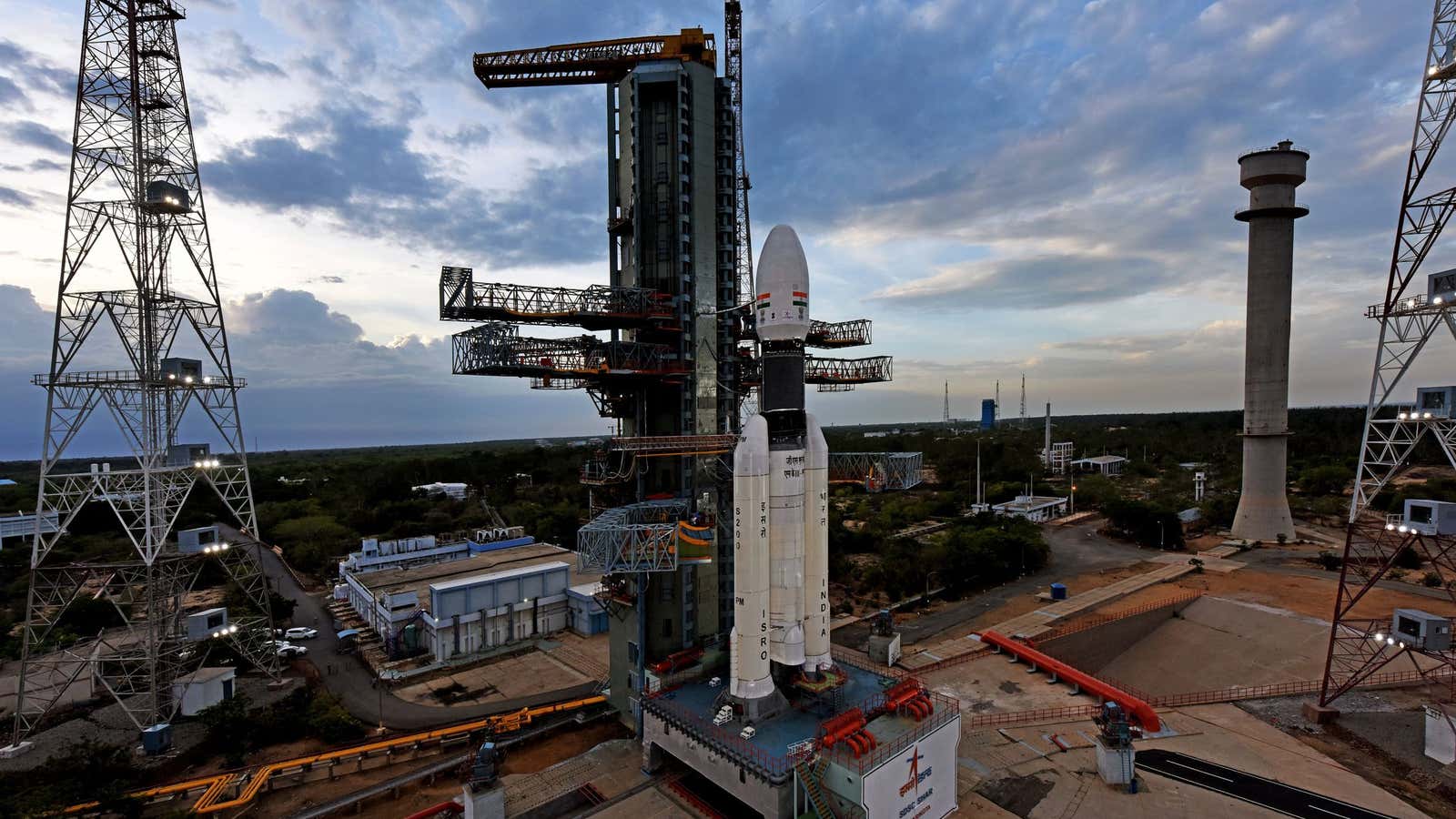A technical glitch led India to call off the launch of Chandrayaan-2, the country’s second lunar exploration mission, at the last moment.
The rocket was scheduled to take off in the wee hours of July 15, from Sriharikota island in southern India. The country’s space agency, Indian Space Research Organisation (ISRO) said it had been cancelled as a “measure of abundant precaution.”
This was India’s first lunar mission in over a decade. In 2008, Chandrayaan-1 had found one of the earliest evidence of water on the moon.
Developed by ISRO, the Chandrayaan-2 module has three main parts: an orbiter, a lander, and a rover. As per the launch plans, the entire module would have released from the rocket while it circled the earth. The module would then slip away from the earth’s orbit and enter the moon’s. The lander, which carries the rover, would dissociate from the orbiter and attempt to execute a “soft landing” (or a controlled landing) on the moon surface on Sept. 6.
If the plan succeeds, India will become the fourth country to soft-land a lunar mission, besides the US, Russia, and China. A probe unit of India’s Chandrayaan-1 had made a crash landing on the moon. Its orbiter, expected to function for two years, had died in less than a year.
The anticipated follow-up mission was originally scheduled to take off in March last year. But it has now been delayed at least eight times.
